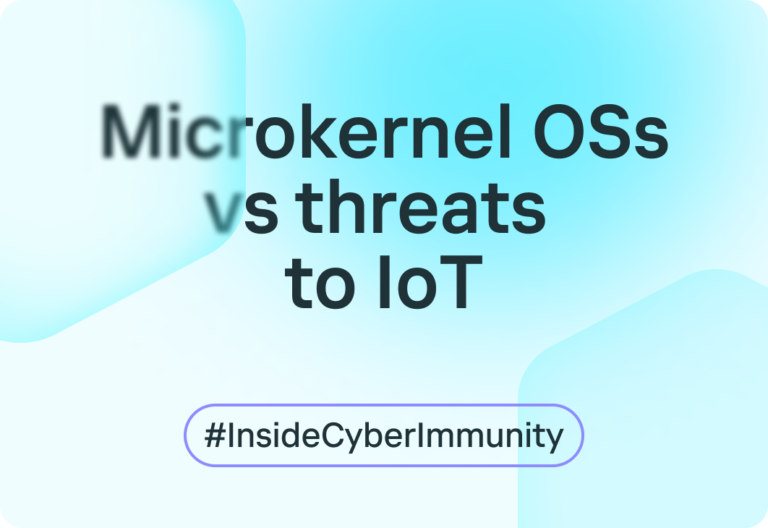
Connected devices are becoming targets in a growing number of attacks. The amount of Internet of Things (IoT) attacks in the world reached over 10.54 million in December 2022, compared with 5.85 million a year earlier, and the highest number of monthly attacks was detected in June 2022, with approximately 13 million attacks. The most sophisticated hackers are able not only to attack smart lightbulbs or smart-locks but also penetrate the local networks using hacked devices. They often exploit the vulnerabilities in IoT system architecture. As far as IoT ecosystems are cyberphysical systems based on multiple interconnected microcontrollers, equipping each little device with sophisticated protection mechanisms is economically unviable, and attackers tend to specifically target the unprotected end devices.
The IoT security problem gets more and more relevant for ecosystems of several connected devices. As a solution to a problem, a number of smart ecosystem vendors invested in the development of microkernel OSs. Even though such operating systems have remained in the background for a long time, they’ve become very common at the microchip and microcontroller firmware level and well-known as more reliable and fault-tolerant. Their secret ingredient is architecture: the kernel contains several times less code than kernel of a traditional system, and performs only strictly necessary functions. This implies several important consequences:
The only thing all these mechanisms tend to lack is trust verification options — methods of verifiable security in which we base our confidence on the results of reproducible verification. In different microkernel OS there are different ways to make sure an element is trustworthy. Learn more about different examples of microkernel OSs for smart ecosystems and methods to prove trustworthiness in our new article ‘Microkernel OSs against threats to smart devices’. There you can also find brief review of modern threats to smart devices and some predictions of the future of microkernel OSs.

Connected devices are becoming targets in a growing number of attacks. The amount of Internet of Things (IoT) attacks in the world reached over 10.54 million in December 2022, compared with 5.85 million a year earlier, and the highest number of monthly attacks was detected in June 2022, with approximately 13 million attacks. The most sophisticated hackers are able not only to attack smart lightbulbs or smart-locks but also penetrate the local networks using hacked devices. They often exploit the vulnerabilities in IoT system architecture. As far as IoT ecosystems are cyberphysical systems based on multiple interconnected microcontrollers, equipping each little device with sophisticated protection mechanisms is economically unviable, and attackers tend to specifically target the unprotected end devices.
The IoT security problem gets more and more relevant for ecosystems of several connected devices. As a solution to a problem, a number of smart ecosystem vendors invested in the development of microkernel OSs. Even though such operating systems have remained in the background for a long time, they’ve become very common at the microchip and microcontroller firmware level and well-known as more reliable and fault-tolerant. Their secret ingredient is architecture: the kernel contains several times less code than kernel of a traditional system, and performs only strictly necessary functions. This implies several important consequences:
The only thing all these mechanisms tend to lack is trust verification options — methods of verifiable security in which we base our confidence on the results of reproducible verification. In different microkernel OS there are different ways to make sure an element is trustworthy. Learn more about different examples of microkernel OSs for smart ecosystems and methods to prove trustworthiness in our new article ‘Microkernel OSs against threats to smart devices’. There you can also find brief review of modern threats to smart devices and some predictions of the future of microkernel OSs.